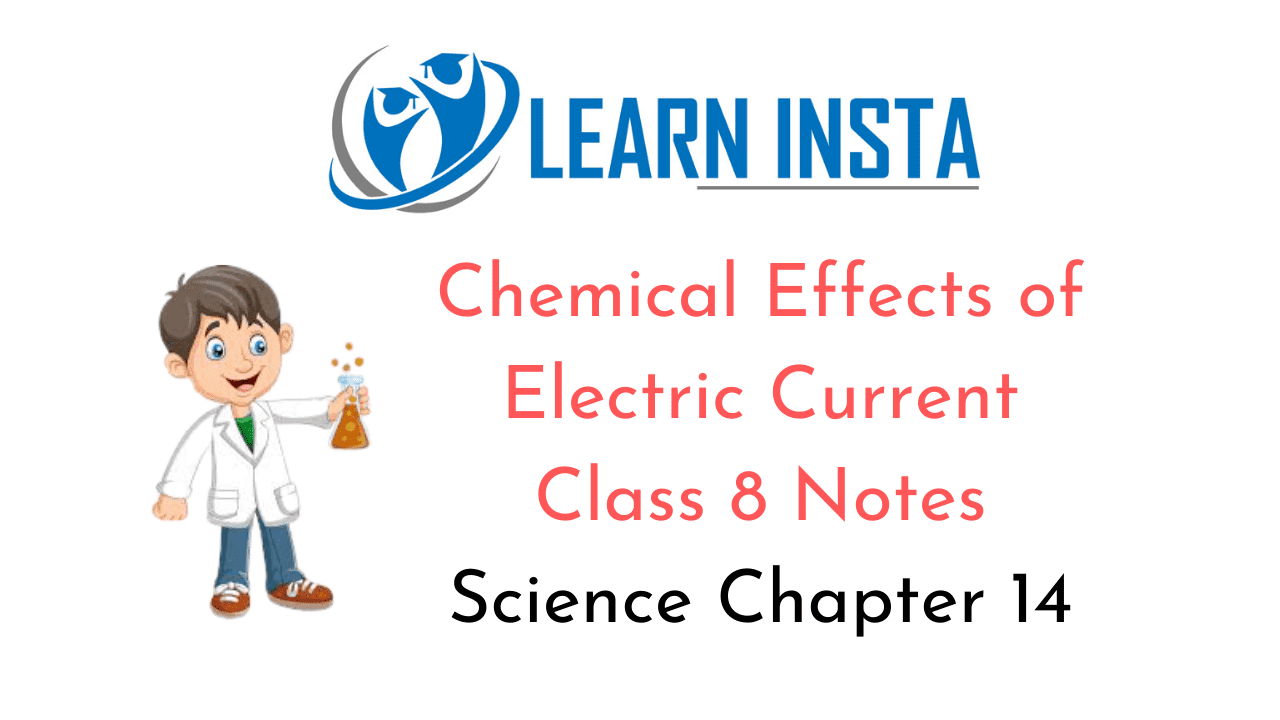
On this page, you will find Chemical Effects of Electric Current Class 8 Notes Science Chapter 14 Pdf free download. CBSE NCERT Class 8 Science Notes Chapter 14 Chemical Effects of Electric Current will seemingly help them to revise the important concepts in less time.
CBSE Class 8 Science Chapter 14 Notes Chemical Effects of Electric Current
Chemical Effects of Electric Current Class 8 Notes Understanding the Lesson
1. The substances that allow the electric current to pass through them are called conductors; e.g., copper, aluminium, etc.
2. The substances that do not allow the electric current to pass through them are called insulators; e.g., I rubber, plastic, wood, etc.
3. Some liquids are good conductors of electricity and some are poor conductors.
4. Most liquids that conduct electricity are solutions of acids, bases and salts.
5. Pure or distilled water is free of salts and thus act as insulator or a bad conductor of electricity. Water from tap, handpumps, wells, etc., is not pure but a solution. It contains small amount of mineral salts dissolved in it. This water is thus a good conductor of electricity.
6. Common salts when dissolved in distilled water, makes it a good conductor.
7. The passage of an electric current through a conducting solution causes chemical reactions such as formation of bubbles of a gas on the electrodes, deposits of metals on the electrodes, changes of colour of solutions, etc., is known as chemical effects of current.
8. Electroplating is one of the most common application of chemical effects of current. It is the process of depositing a layer of any desired metal on another material by means of electricity.
9. Electroplating is done to make objects shiny in appearance, resistant to scratches and corrosion.
Class 8 Science Chapter 14 Notes Important Terms
Electrode: An electrode is a conductor that allows electric current to pass from one medium to another using the graphite or metal plates or rods.
Electroplating: The process of depositing a layer of any desired metal on another material by means of electricity is called electroplating. It is done by using an electrolytic cell.
Good conductor: The materials which allow electric current to pass through them are called good conductors of electricity; e.g., copper, aluminium, etc.
Poor conductor: The materials which do not allow electric current to pass through them are called poor or bad conductors of electricity. They are also known as insulators; e.g., rubber, plastic, wood, etc.
LED: It is an electronic device containing two wires called leads, one lead (longer) is connected to the positive (+) terminal and the other (smaller) to the negative (-) terminal of the battery. It starts emitting light even when a very weak current flows through it. It is actually Light Emitting Diode.